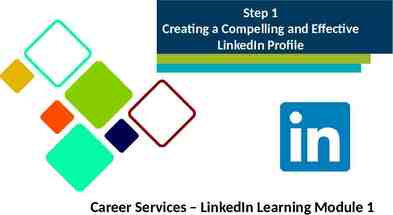WELCOME TO ART Intro to Art Drawing & Painting I Sculpture
25 Slides7.81 MB
WELCOME TO ART Intro to Art Drawing & Painting I Sculpture I PERRY High School C-303
What is ?
Individually answer the following questions: What is art? What are different types of art? How does art influence society? Why is art important? What sort of messages does art have?
The Elements & Principles of Art
Image #1 Is this art? Why or why not? What elements & principles does it have or not have?
Image #2 Is this art? WHY? HOW? Describe Analyze Interpret Evaluate
Image #3 Is this art? What technique(s) did the artist use? What media? How does that effect the quality, purpose, feeling?
Image #4 Is this art? What is the time period, location, social state the artist was working in when they created it?
Image #5 Is this art? How does modern culture influence art? What is “good” art?
Image #6 Is this art? What feelings & emotions are brought up?
What is the Purpose of Art?
religious ritual From the prehistoric cave paintings of France, to the Sistine Chapel, art has served religion. For centuries the Church was the primary patron of artists. In traditional societies even today, the primary purpose of art is religious or ceremonial.
commemoration of an important event or person The event may be of major historical importance, such as the coronation of Josephine by Napoleon as recorded by the artist David, or it may be important only to the participants, like the image of a wedding or a baptism.
propaganda or social commentary Propaganda images are attempts to persuade us toward particular viewpoints or actions promoted by public or private institutions such as political parties, lobbyists, governments, or religious groups. The propaganda purpose may be one we approve of, such as World War II efforts to get women behind the war effort, as epitomized in Norman Rockwell's Rosie the Riveter. It might also be a purpose we disapprove of. In either case, the power of visual images has frequently been used to persuade masses of people to accept beliefs, take action, or follow leaders. The artist as social commentator may simply make us more aware of the human condition as he/she perceives it, without suggesting particular action.
recording of visual data telling the "truth" about what we see. After the Renaissance, artists became preoccupied with new ways of capturing reality such as the use of linear perspective, and the realism possible through the use of oil painting technique. In time, artists like Courbet and Cezanne (and many who followed them) began in various ways to challenge the basic idea of what it is for an image to be true and real.
creating beauty Yet the idea of beauty, like that of truth, has been challenged in the modern era. At one time, the artist was expected to portray perfection-- lofty and noble ideals of beauty. Yet as society became more industrialized and democratic, many thoughtful people began to broaden their notions of what could be beautiful. For example, Rembrandt could celebrate the tactile quality of paint and color in his picture of a side of beef, and Courbet and Millet could see beauty in the life of ordinary peasants.
storytelling his was a common device of religious art of the Middle ages where sequences of panels were used to tell stories from the Scriptures or lives of saints. It is also the great gift of Norman Rockwell, who had the ability to tell powerful and subtle stories about ordinary people and events, in just one picture. A picture is truly worth a thousand words.
intense emotion The expressive power of art can be seen in literal ways in the capturing of facial expression and body language. Certain religious art, and the works of expressionists such as Munch are charged with powerful emotions. Picasso, in works such as Guernica (also an example of powerful social commentary and storytelling) is able to communicate intense emotions. This is accomplished variously by use of dramatic or exaggerated color, light, form, and/or other elements.
innovation “The central meaning of innovation thus relates to renewal. For this renewal to take place it is necessary for people to change the way they make decisions. They must choose to do things differently, make choices outside of . their norm so innovation must be seen as something that does not something that is .contributors to the scholarly literature on innovation typically distinguish between invention, an idea made manifest, and innovation, ideas applied successfully in practice.” In other words, innovation is a mindset not a product. It is not starting from scratch, it is developing existing art by thinking differently about it.
Mrs. Vogt My background: – I grew up in Pennsylvania, and lived in New Jersey before moving to Arizona. – I attended Rosemont College where I received a Bachelors Degree in Art & Education. – I studied in Paris, France at The American University in Paris and Parsons School of Design. My experience: – I worked as an art cataloger at Princeton University in New Jersey – I taught Middle School Art in NJ for 5 years & 7-12 in Arizona for 7 years. 3rd year at Perry HS. – I have also taught Art in Special Education and give private lessons & art camps. My life: – 2 children: Morgan age 16, Paige age 14, & Zeke the zuchon. – I love to travel, hike, go to concerts, museums & go on road trips.
3 things I like: Sand between my toes iPhone Photography The encore song at Concerts
3 things I dislike: Snow! People who drive too slow When you're cooking & the food boils over
rt Classroom EXPECTATIONS Mrs. Vogt Room D-107 E RESPONSIBLE Be on time! Come in quietly & sit in your assigned seat. Be prepared with a sharpened pencil & your sketchbook. Use materials properly. Do not misuse supplies. Do not throw anything in class. Ask permission/sign out to go to the restroom or to get a drink. Clean-up after yourself. Put supplies back where they belong & leave the room E RESPECTFUL – No talking during class instructions and demonstrations, except to ask question We will respect our room (keep it clean), our supplies (use tools as they were in and each other (keep hands, feet, and objects to yourself). Use positive words and actions. No cursing or inappropriate behavior or drawin Follow all school rules. NO GUM NO FOOD NO PHONES E READY Try your best. Never say “I can’t”, work to the best of YOUR ability. Participate and be an active learner. Open your creative mind & have fun!






























